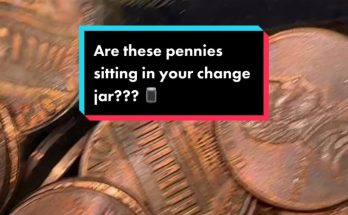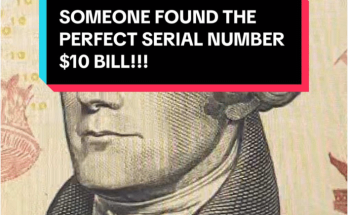The Rarity of the 1983-D Penny
The year 1983 was a transitional year for the U.S. Mint, as they completed the switch from the old 95% copper planchets (used before mid-1982) to the new, lighter, copper-plated zinc planchets.
- Standard Composition and Weight: All 1983 Lincoln Cents, including those minted in Denver (marked with a “D” mintmark), were intended to be struck on the newer, copper-plated zinc planchets. These standard cents weigh approximately 2.5 grams. Due to the immense mintage—the 1983-D alone had a mintage of over 6.4 billion—most standard 1983-D cents are common and only worth face value, even in high-grade condition.
- The Transitional Error (The Big Value): The most significant and valuable error for the 1983 cent, including the 1983-D, is the Transitional Error. This error occurs when a coin is accidentally struck on the leftover 95% copper planchets from the previous year.
- The correct copper planchets weigh about 3.11 grams. Any 1983-D penny that weighs around this heavier mark (between 2.89 and 3.24 grams) could be a genuine Transitional Error and worth a substantial amount.
- This type of error is similar to the famous 1943 Bronze Cent, which was also a transitional error.
- Examples of 1983-D cents struck on a bronze planchet have been confirmed and sold at auction. The value of these specific error coins is significant, with known examples selling for tens of thousands of dollars, such as a 1983-D bronze cent that sold for $17,625. These are considered extremely rare.
Other Valuable 1983 Cent Varieties
While the Transitional Error is the most valuable for the 1983-D, other error and variety types can also fetch a premium for the date in general:
- Doubled Die Reverse (DDR): A distinct Doubled Die Reverse variety is known for the 1983 cent (no mintmark shown, but the variety is listed). The doubling is most visible on the lettering of the reverse side, specifically on phrases like “E PLURIBUS UNUM” and “ONE CENT”. High-grade examples of the 1983 DDR have sold for hundreds to thousands of dollars. While the most prominent DDR is associated with the Philadelphia minting, other Doubled Die varieties (Doubled Die Obverse, or DDO) are also known for 1983-D cents and can hold collector value.
- Other Mint Errors: General mint errors, such as off-center strikes, clipped planchets, or pieces with significant die cracks, can also be valuable to error coin collectors, though their value is highly dependent on the severity and appearance of the error.
Conclusion
The extreme value, such as the “$35 million” figure, is associated with the most phenomenal, potentially undiscovered, or highly-graded Transitional Error or another unique flaw. For a collector or a person checking their pocket change, the key to identifying a valuable 1983-D cent is to use a sensitive scale. If a 1983-D cent weighs approximately 3.11 grams instead of the standard 2.5 grams, it is a very rare and potentially valuable Transitional Error. It is crucial for anyone finding a coin that fits this description to have it authenticated and graded by a professional third-party service.



